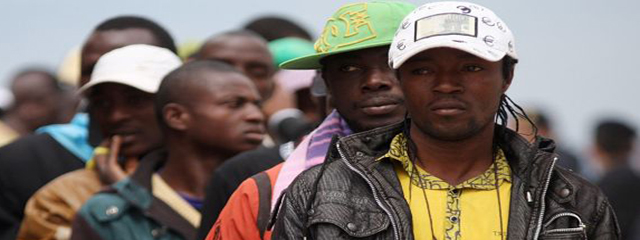The boat disaster on October 3 off the coast of Lampedusa, which cost the lives of around 200 refugees and migrants, is already prompting governments and international organisations to loudly call for “tough action against human trafficking”. Over the past decade, that has been the standard reaction whenever such a tragedy has occurred off the southern coast of Europe. That kind of logic turns the causality of the events upside down. After all, it is the very tightening-up of border controls that forces migrants to take dangerous routes and makes them increasingly dependent on human traffickers to get across the border.
Migration is primarily fuelled by the continuing demand for cheap labour in agriculture, the service sector and other informal sectors. A considerable minority of these migrants are refugees fleeing violent conflicts in their homelands. Until more legal immigration channels are developed and as long as refugees are denied access to asylum procedures, the majority of this migration will most probably continue illegally.
More dangerous routes
It is an almost impossible task to close off the extensive coastlines of the Mediterranean Sea. Border controls have largely overreached their objectives. In the 1990s, controls in the Strait of Gibraltar were tightened up, but that failed to stop the migration. Instead, in the course of the first decade of the 21st Century, the African migration routes diverted eastward and southward over land.
The result was and unintended expansion of the area EU countries have to control in their “fight” against illegal migration. That area now includes the entire North-African coast and various places along the West-African coast, from where refugees set course for the Canary Islands.
The routes have become longer and more dangerous, forcing migrants to rely more heavily on human traffickers. For two decades, a fortune was invested in border controls and ever-more money pumped into Frontex (the European agency for the management of operational cooperation at the external borders), but that too, was unable to halt the migration. Since 1988, at least 19,000 people have died – and that figures is based only on the bodies that have been found. Especially concerning is that the so-called “fight against illegal migration” has led to people fleeing violent conflicts and persecution in countries such as Syria, Somalia and Eritrea actually being denied access to asylum procedures.
*Read the full article here.
*Image: AP Photo/Lapresse






Be the first to comment on "Lampedusa Tragedy: The Deadly Cost of Tighter Border Controls"